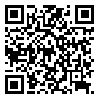BibTeX | RIS | EndNote | Medlars | ProCite | Reference Manager | RefWorks
Send citation to:
URL: http://jdisabilstud.org/article-1-1908-en.html
2- Assistant Professor, Department of Psychology, Central Tehran Branch, Islamic Azad University, Tehran, Iran
3- Associate Professor, Department of Psychology, Central Tehran Branch, Islamic Azad University, Tehran, Iran
Abstract
Background & Objectives: The behaviors considered normal at age 3 may indicate a clinically significant problem or disorder at age 5. Disruptive behavior problems in early childhood, such as aggressive behaviors, are often stable and signs of poor mental health prognosis in the future, which may lead to school failure, substance abuse, and crimes. These behaviors represent a range of potential risk factors regarding neurodevelopmental disorders and mental health problems, let alone their adverse effects on the child's current performance and increased stress in the family. The family environment is an important feature of the intervention because it can greatly enhance or hinder children and adolescents' emotional and social development. This study aimed to compare the effectiveness of parent–child interaction therapy and a combination of parent–child interaction therapy and attachment therapy on insecurely attached mothers with their children's behavioral problems.
Methods: This quasi–experimental study has a pretest–posttest and a 2–month follow–up design with a control group. The statistical population included mothers with children with behavioral problems. The mothers were referred to psychological counseling clinics in district one of Tehran City, Iran, during 2018 and 2019. Thirty eligible volunteer mothers were identified as having an insecure attachment style based on their scores in the Experiences in Close Relationships Scale–Short Form (Wei et al., 2007) were included in the study. They were divided into two experimental and one control group. The first experimental group received only the parent–child interaction therapy. The second experimental group received the combined method of parent–child interaction therapy and attachment therapy. The mothers responded to the Child Behavior Checklist for the pretest, posttest, and follow–up assessment (Achenbach & Rescorla, 2007). The first experimental group received 10 sessions of parent–child interaction therapy, and the second group received 10 sessions of parent–child interaction therapy and 10 sessions of attachment therapy. Descriptive (frequency, percentage, mean and standard deviation) and inferential statistics (analysis of variance, analysis of variance with repeated measurements, and Bonferroni's post hoc test) were used to describe and analyze the data in SPSS version 24. The significance level of the tests was considered 0.05.
Results: The results showed that the parent–child relationship therapy and the combination of parent–child interaction treatment and the attachment therapy had a reducing effect on both variables of anxiety, depression/isolation, physical complaints, social problems, thought problems, attention problems, law–breaking and aggressive behavior (p<0.001). The time parameter reduced anxiety, depression/isolation, physical complaints, social problems, thought problems, attention problems, law–breaking behavior, and aggressive behavior (p<0.001). The interaction of time*group reduced anxiety, depression/ isolation, physical complaints, social problems, thought problems, attention problems, law–breaking, and aggressive behavior compared to the control group (p<0.001). There was a significant difference between the two experimental groups in the variables of depression/isolation (p=0.006), aggressive behavior (p=0.013), and law–breaking behavior (p=0.001). But no significant difference was observed between the two experimental groups in the other variables, i.e., anxiety, physical complaints, social problems, thought problems, and attention problems (p=1.000). Also, the results showed a significant difference between the mean values of the mentioned variables (including anxiety, depression/isolation, physical complaints, social problems, thought problems, attention problems, law–breaking behavior, and aggressive behavior) in the pretest with posttest and follow–up phases in the experimental groups (p=0.001) and the persistence of this effect in the follow–up phase (p=0.017, p>0.05).
Conclusion: Based on the findings of this study, both parent–child interaction therapy and the combination of parent–child interaction therapy with attachment therapy are effective on children's behavioral problems. However, combining parent–child interaction therapy with attachment therapy showed a greater effect on children's behavioral problems.
| Rights and permissions | |
 |
This work is licensed under a Creative Commons Attribution-NonCommercial 4.0 International License. |



